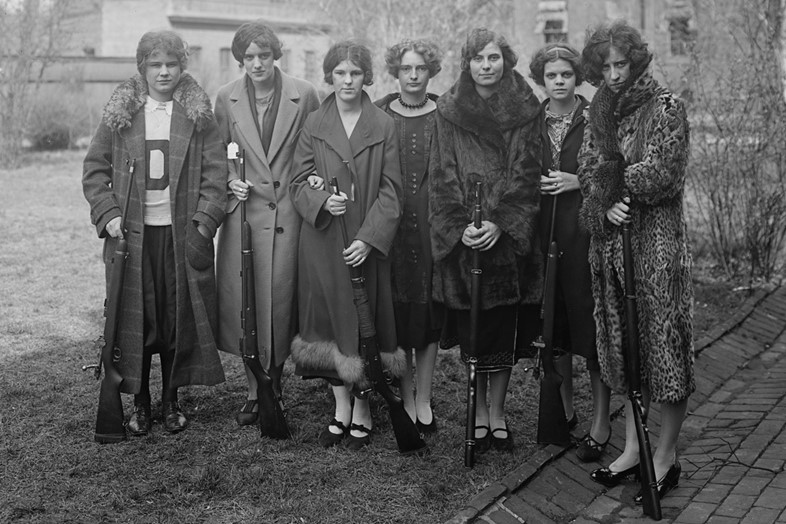Matt Wolf, director of a unique documentary considering the creation of the teenager, discusses his own adolescence
We were all teenagers once, but some were more so than others. Indeed, a century ago, one was a child and played, then one was an adult and worked – life didn’t allow for that hazy middle bit where emotions ruled, tears proliferated and parents didn’t understand. In Matt Wolf’s dreamlike documentary Teenage, he shows, through archive footage, new film fabricated to look like old, and contemporary teenage diaries brought to life by the likes of Ben Wishaw, that heady period of change, when, for good or bad, the young took control of their own destinies and passions. He traces the seismic shifts caused by industrialisation, changes to child labour laws and the onset of war, how education and free time allowed the young to sculpt their own paths, leading, perhaps inevitably, to rebellion. From the scandalous fashions of the flappers and the noise of rock’n’roll, to leg flinging jitterbuggers, the reappropriation of hysteria and a flirtation with violence, Wolf portrays four very different worlds, all in transition, all with similar concerns and demands at their hearts. It is a history in tune with AnOther Magazine's S/S14 issue themed around fearlessness, so here we asked Wolf about his own period of transition, and the movements that inspired him on his journey to portray the birth of the Teenager.
What is the element of youth culture that you think affected you the most as a teenager? Was it what was au courant when you were growing up or was it something from before?
I came out as a teenager, but I wasn’t drawn to mainstream gay culture. It was the moment when Ellen Degeneres had come out on television, so being queer was mainstream. I was searching for an alternative, and I found it in music and film. I got into alternative music by choosing record covers I liked – Wire’s Pink Flag, Sonic Youth’s Daydream Nation, Smiths’ records… And my friend’s older sister showed me her zine called Hepcat, and that aesthetic and the notion of underground distribution really inspired me. It was also the heyday of 90s independent film, and I was discovering “new queer cinema,” like Derek Jarman and Todd Haynes at the library and local video store. I loved how a lot of those films dealt with biographies and history, but reinterpreted through an experimental and queer lens. So I guess the kind of youth culture that inspired me was from previous generations. But I was reclaiming it as my own thing.

You've talked about the film as a form of living collage, stitching together archive footage and modern recreations styled to look like archive - why was it so important to you to maintain a single tone throughout, to cover so many different types of teenage expression and rebellion?
I think the biggest challenge of filmmaking is making things that don’t obviously fit together work. That’s what editing is, in essence. But it’s important to create an overall form or a style that relates to your subject matter – that’s a big concern of mine. So I don’t have a signature style of filmmaking per se, but I wanted to make a strong stylistic statement with Teenage… to embrace the rebelliousness of the subject matter, and to bring out the dreaminess of being young. I’m drawing on 40 years of history, three countries, and two World Wars. The material is so panoramic and diverse, that creating a unifying form was important. I’m interested in what’s different about all these eras, but I’m equally interested in what doesn’t change. Regardless of the period, adults try to control youth because they represent the future, and young people push back trying to create their own world. I think that kind of teenage rebellion is meaningful and is still happening today.
What was your favourite discovery when making the film?
I was blown away by the colour home movies we found of German Swing Kids. They came from an archive called Framepool from storage vaults in Munich. The German Swing kids were a group of youth in Nazi Germany who smuggled American swing records and British fashion into their country, and hosted underground dance parties. They were risking their lives, and many of them were arrested by the Gestapo. To find an actual film of those kids was mind boggling to me. It felt like unearthing a secret.

The theme of the latest issue of AnOther Magazine is Fearless Youth. What did being a teenager mean to you? Was fearlessness a key part of the experience, and if so, how?
As a teenager, and as a young activist, I felt like my actions were changing the world. As an adult I don’t feel empowered in that way… my thinking is more measured and reality-based. But as a teenager, fighting for gay rights, I was changing the world in some small way, even if it was just my little world. I remember the day when I came out as gay in the underground newspaper I published at my school. I dumped the papers in the quad and went to the bathroom for 30 minutes and just sat there, feeling like I was going to barf. When I walked outside the papers had spread all over the school, and people were looking at me and whispering. I guess that was kind of fearless. It helped other people take risks and to speak up. I think when you’re young, you don’t care about the consequences because the intensity of feelings are so strong. I wanted to change my reality because I felt restless and oppressed. I think a lot of teenagers feel that way, and that the ways they rebel can be really important.
Teenage is out on DVD on March 31.
Text by Tish Wrigley